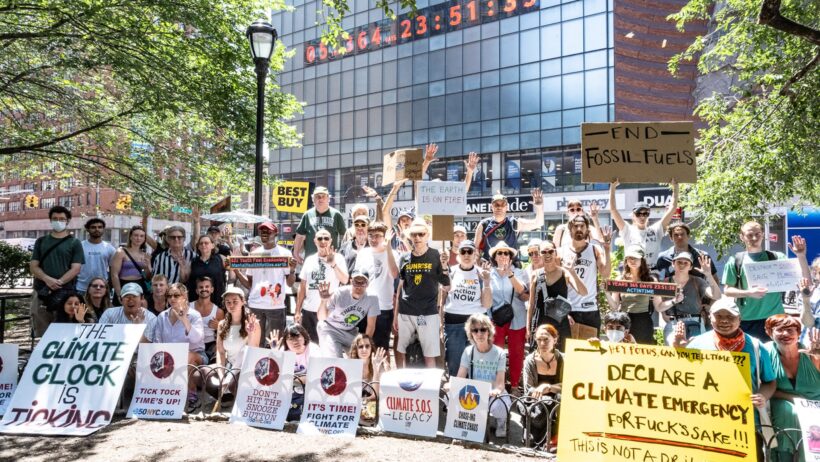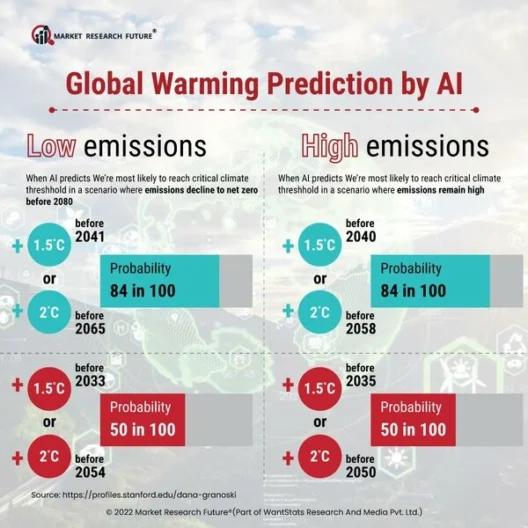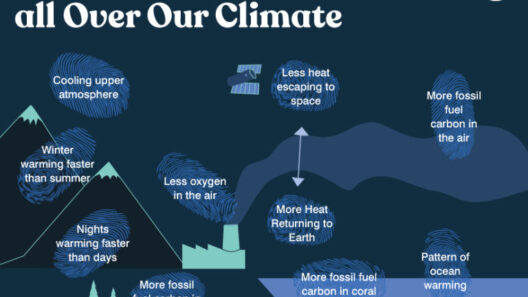The Climate Clock is not merely a digital countdown; it symbolizes an urgent call to action in our race against climate change. Encapsulating the ephemeral nature of our environment, the Climate Clock visually represents the finite amount of time we have to avert catastrophic environmental degradation. With an ever-ticking countdown, it poses a playful yet alarming question: “How much time do we have left to save our planet?” This visual manifestation urges society to confront a stark challenge: the need for immediate action to reverse the often devastating impacts of climate change.
But what exactly is the Climate Clock? This innovative tool encapsulates scientific data and projections regarding carbon emissions and temperature increases, offering a tangible depiction of the accelerating crisis we face. It primarily focuses on the global emissions budget—essentially, the total amount of carbon dioxide (CO2) that can still be emitted while maintaining a reasonable chance of limiting global warming to 1.5 degrees Celsius above pre-industrial levels. As of now, the Climate Clock delineates a clear deadline by which we must drastically reduce emissions: a mere few years away. The stakes are high, and every second counts.
Understanding the premises that underlie the Climate Clock necessitates a glimpse into the science of climate change. The atmospheric concentration of greenhouse gases has reached alarming levels, primarily due to human activities such as fossil fuel combustion, deforestation, and industrial processes. These activities contribute to the greenhouse effect, whereby heat is trapped in the earth’s atmosphere, leading to global warming and its attendant consequences: rising sea levels, erratic weather patterns, extreme heat events, and more. The Climate Clock is thus a stark reminder that without immediate intervention, the consequences will be catastrophic.
One might contemplate what it feels like to live under a digital countdown. The emotional weight of the Climate Clock serves not only as a grim reminder of our limitations but also as a catalyst for mobilizing individuals and communities toward positive change. It enlivens discussions about sustainability, digging deep into the dialogue about carbon neutrality and the collective responsibility we owe to future generations. With the clock as a backdrop, communities across the globe are striving to implement solutions that mitigate climate change.
Innovative initiatives aimed at combating climate change have sprung up in response to this urgency. Renewable energy sources—such as solar, wind, and geothermal—are becoming mainstream alternatives to fossil fuels. There’s a pronounced shift towards sustainable practices in agriculture, urban planning, and manufacturing. Activists are advocating for legislation that enforces stricter emissions regulations and promotes clean energy innovations. The Climate Clock serves as a critical reminder that these actions not only contribute to reducing emissions, but they also generate economic opportunities and foster resilience in communities.
However, the challenge remains daunting. The question arises: “Can we collectively transcend our comfort zones and unite in our efforts to combat this crisis?” One solution, though daunting, is the concept of a carbon budget. Just as governments and corporations operate within financial budgets, the planet operates within an ecological budget. The Climate Clock delineates that budget and forces us to confront our limits. The challenge is not merely the quantification of carbon emissions; it is the actualization of a comprehensive, multifaceted approach to sustainability.
Amidst these complex challenges, it’s crucial to foster educational outreach that underscores the impact of individual actions on the collective problem. Grassroots movements are pivotal in transforming a solitary perspective into a broad societal shift. Engaging local communities in discussions about climate science enables a deeper understanding of the issues at hand. Whether through workshops, informational campaigns, or social media engagement, disseminating knowledge continues to be a powerful tool in the fight against climate change. The Climate Clock is not just data; it’s the narrative of our shared future.
Moreover, public art installations of the Climate Clock serve as visually captivating interventions that evoke emotional resonance and provoke public discourse. They effectively bridge the gap between abstract scientific data and tangible reality. Such installations invite viewers to engage, reflect, and ultimately consider what role they might play in this urgent crisis. Just as artworks provoke thought and discussion, so does the Climate Clock compel action by instilling urgency in societal consciousness.
This shift in perspective, however, does not come without its hurdles. Resistance to change can stem from entrenched interests, misinformation, and simply the difficulty of altering established behaviors. Each of these factors poses a significant challenge in achieving the necessary consensus. It may lead to exploring the idea of mandating educational policy changes that incorporate climate science comprehensively into curricula, enabling future generations to be equipped with the knowledge required for sustainable living.
As the countdown continues, it becomes vital for every individual, organization, and government to discern their role. The Climate Clock stands as a testament to the fragility of our existence and the resilience of our collective spirit. It symbolizes not only a deadline but also an opportunity for metamorphosis. The question remains—are we prepared to embrace this challenge and act decisively? Will we allow time to slip through our fingers, or will we rise to meet the daunting prospect of transforming our societies for the sake of the planet?
In conclusion, the Climate Clock encapsulates both a dire warning and a beacon of hope. It challenges us to confront our habits, rethink our priorities, and work collaboratively towards sustainable solutions. The clock is ticking, and the time for action is now. It is an invitation to challenge apathy and ignite a collective movement towards a sustainable future. In the race against time, the question remains: what will you do?








